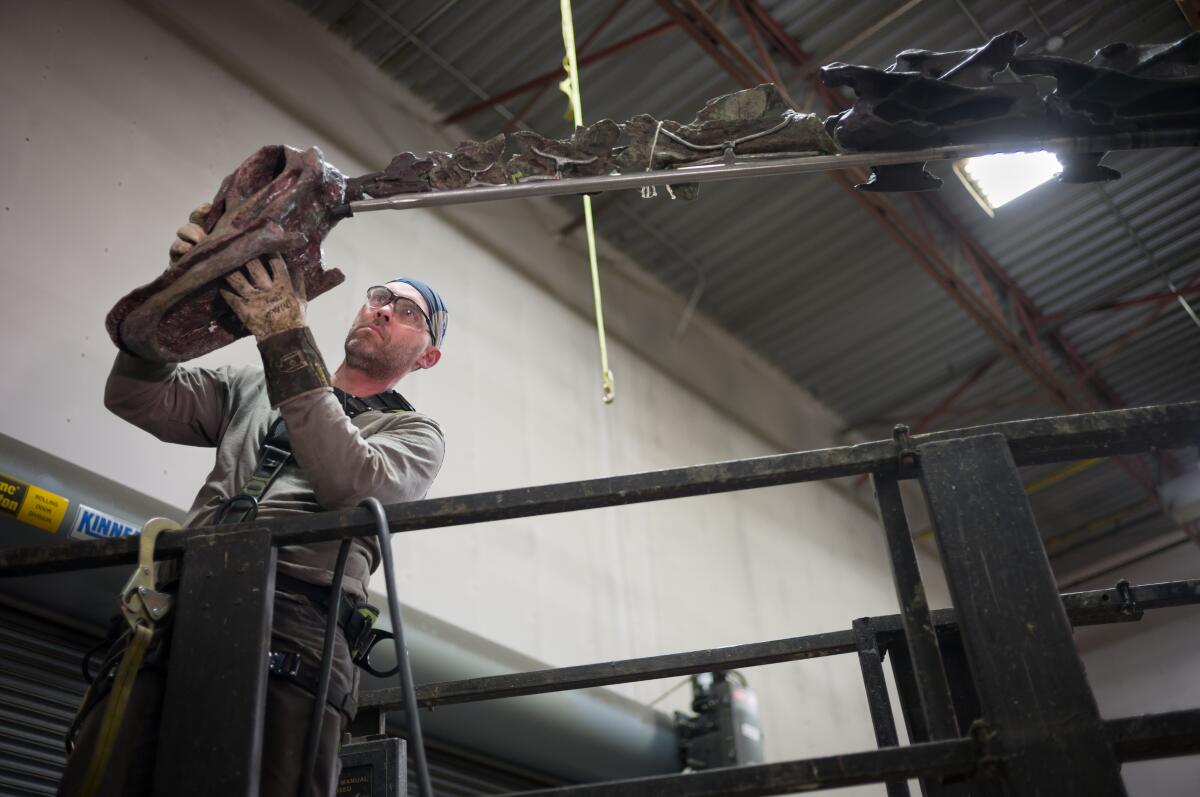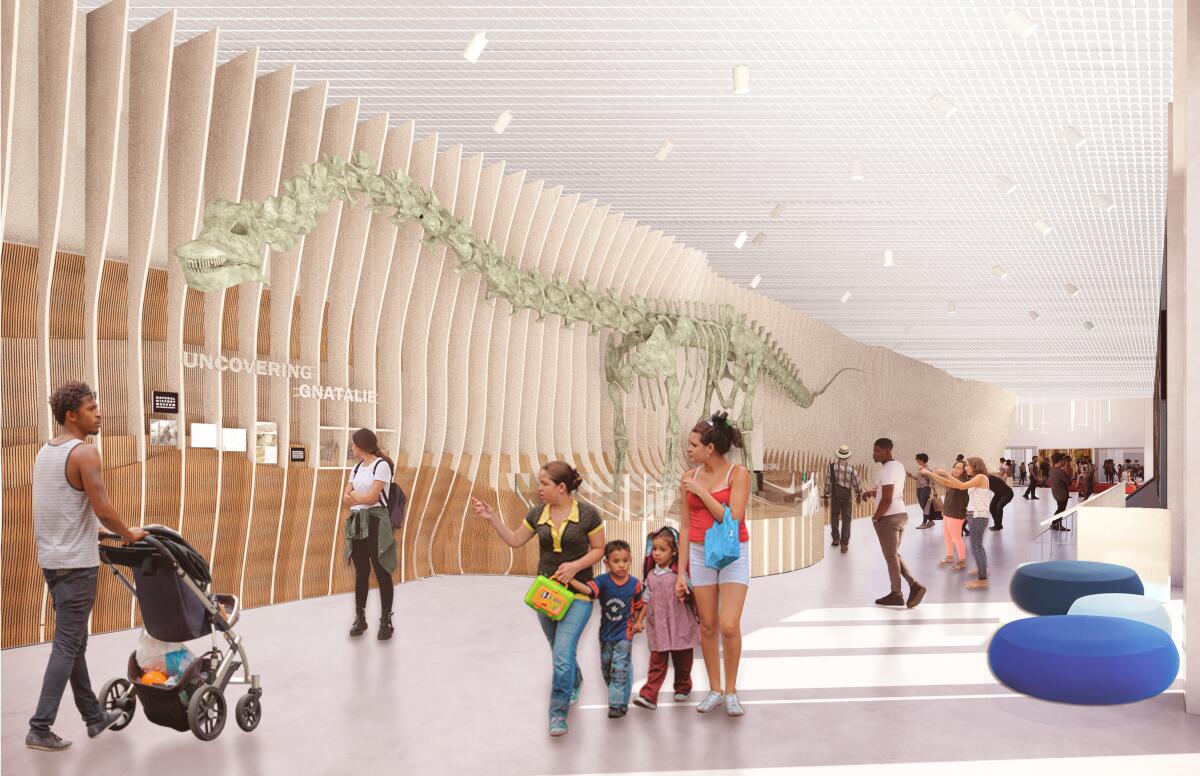L.A.’s newest dinosaur has its forever name

- Share via
The people have spoken, and L.A.’s newest Jurassic-era resident has its forever name.
Dinosaur fans who responded to the museum’s request for input overwhelmingly chose to call the Natural History Museum’s new 70-foot-long sauropod “Gnatalie.”
More than 36% of roughly 8,100 participants in a public poll chose that name, which is pronounced “Natalie,” from among five options offered by the museum.

The punny moniker is a reference to the relentless swarm of gnats that plagued paleontologists, students, museum staff and volunteers during the 13-year effort to unearth the dinosaur’s remains from a quarry in southeast Utah. Museum staff nicknamed the dinosaur Gnatalie while they were still digging it up, a process that lasted from 2007 to 2019.
The long-necked, long-tailed skeleton will be the focal point of the NHM Commons, a $75 million welcome center currently under construction on the southwest end of the museum in Exposition Park. Slated to open this fall, the Commons will offer gardens, an outdoor plaza, a 400-seat theater and a glass-walled welcome center that can be toured without a ticket.
The Natural History Museum is seeking Los Angeles’ help in naming a dinosaur fossil, affectionately called ‘Gnatalie’ for now, that will go on display later this year.
“The efforts of hundreds of people contributed to what you see here, ground to mount,” said paleontologist Luis Chiappe, director of the Dinosaur Institute at the Natural History Museum of Los Angeles County.
The specimen appears to be part of a new species, similar to the Diplodocus, which will be scientifically named in the future. Thanks to celadonite minerals that replaced organic matter during the fossilization process, the mounted skeleton has a unique greenish-brown hue.
The skeleton is made up of about 350 fossils from six different animals whose bones washed into a river after death some 150 million years ago and commingled.
“We are delighted to see how many people voted and how much they loved our name for this unusual dinosaur,” said Lori Bettison-Varga, President and Director of the Natural History Museums of Los Angeles County.








